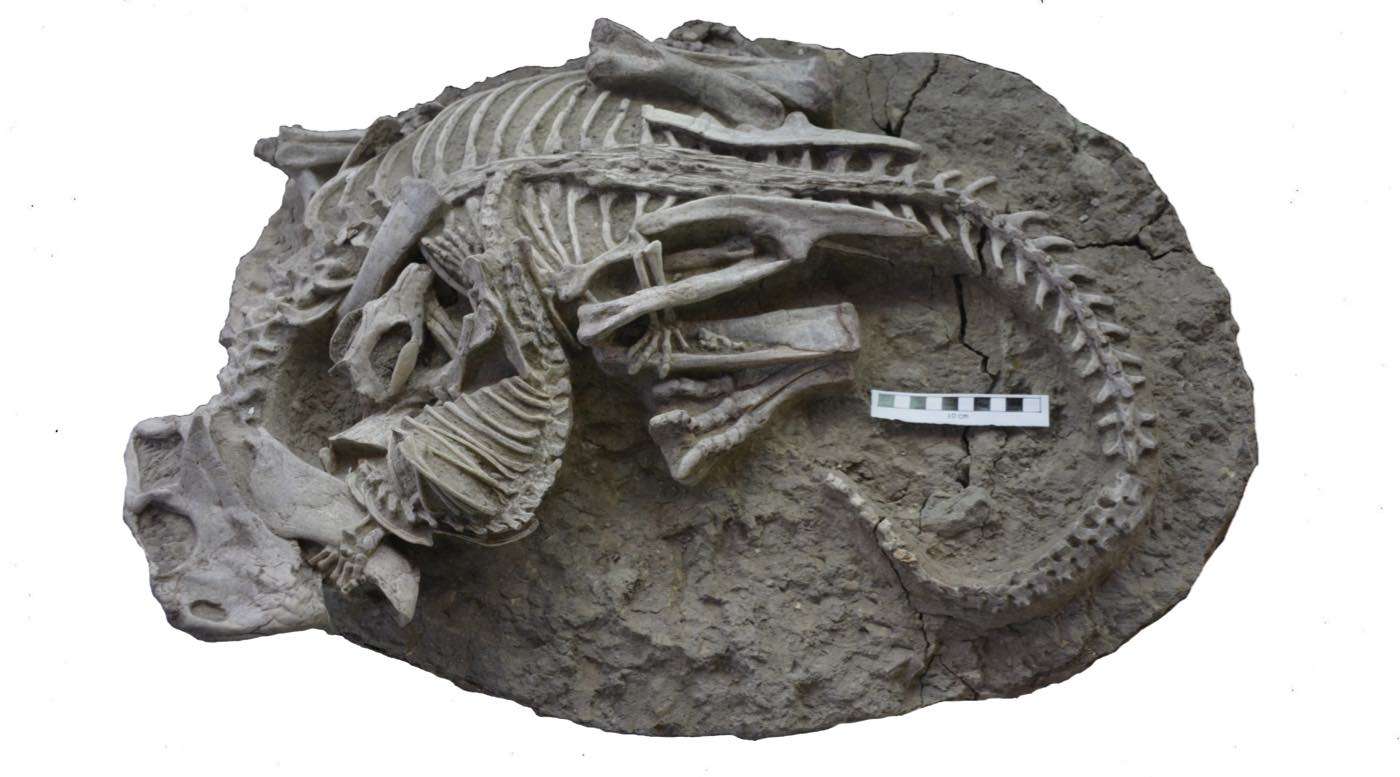Veterinary Conference Turns into Free Clinic to Care for the Pets of Denver's Homeless
The event held over last weekend allowed anyone to bring in an animal to receive a free health check, vaccinations, and essential supplies.

An extraordinary fossil of a dinosaur being attacked and eaten by a mammal has been unearthed by paleontologists.
It features the entangled skeletons of a beaked and horned herbivore and the smaller, meat-eating Repenomamus at a prehistoric animal graveyard in China's Liaoning Province dubbed ‘Dinosaur Pompeii,' for the number of pristine fossils uncovered there.
The amazing scene was frozen in time when a mudslide entombed them both and contains some of the first evidence to show actual predatory behavior by a mammal on a dinosaur.
"The two animals are locked in mortal combat—intimately intertwined," said co-author of the English language paper of its discovery, Dr. Jordan Mallon from Ottawa's Museum of Nature. "The weight of the evidence suggests that an active attack was underway."
Close examination shows the dinosaur is lying prone with its hindlimbs folded on either side of its body. Psittacosaurus was about the size of a large dog.
The weasel-like Repenomamus, the largest mammal of the Cretaceous, coils to the right and sits atop—gripping the jaw of its prey while biting into some of the ribs. Its back foot is holding onto Psittacosaurus‘ hind leg.
The international team ruled out scavenging as the bones of the dinosaur bear no tooth marks. It's also unlikely the two would have become so entangled. Furthermore, Repenomamus was known to have preyed on Psittacosaurus because of fossilized baby bones of the herbivorous dino found in the mammal's stomach.
The elevated position of Repenomamus also suggests it was the aggressor.
Lone wolves are known to hunt larger animals, including caribou and domestic sheep, in the modern world, and the Mustelids, like stoats, weasels, and martins, routinely prey on much larger rabbits and other mammals.
There were also small mammals, lizards, and amphibians buried suddenly en masse by mudslides and debris following volcanic eruptions nearby.
Dr. Mallon said in his paper that he is sure the fossil beds at Lu Jia Tun will continue to yield new evidence of interactions among species otherwise unknown to the fossil record.
SHARE This Stunning And Exciting New Fossil With Your Friends…
Be the first to comment